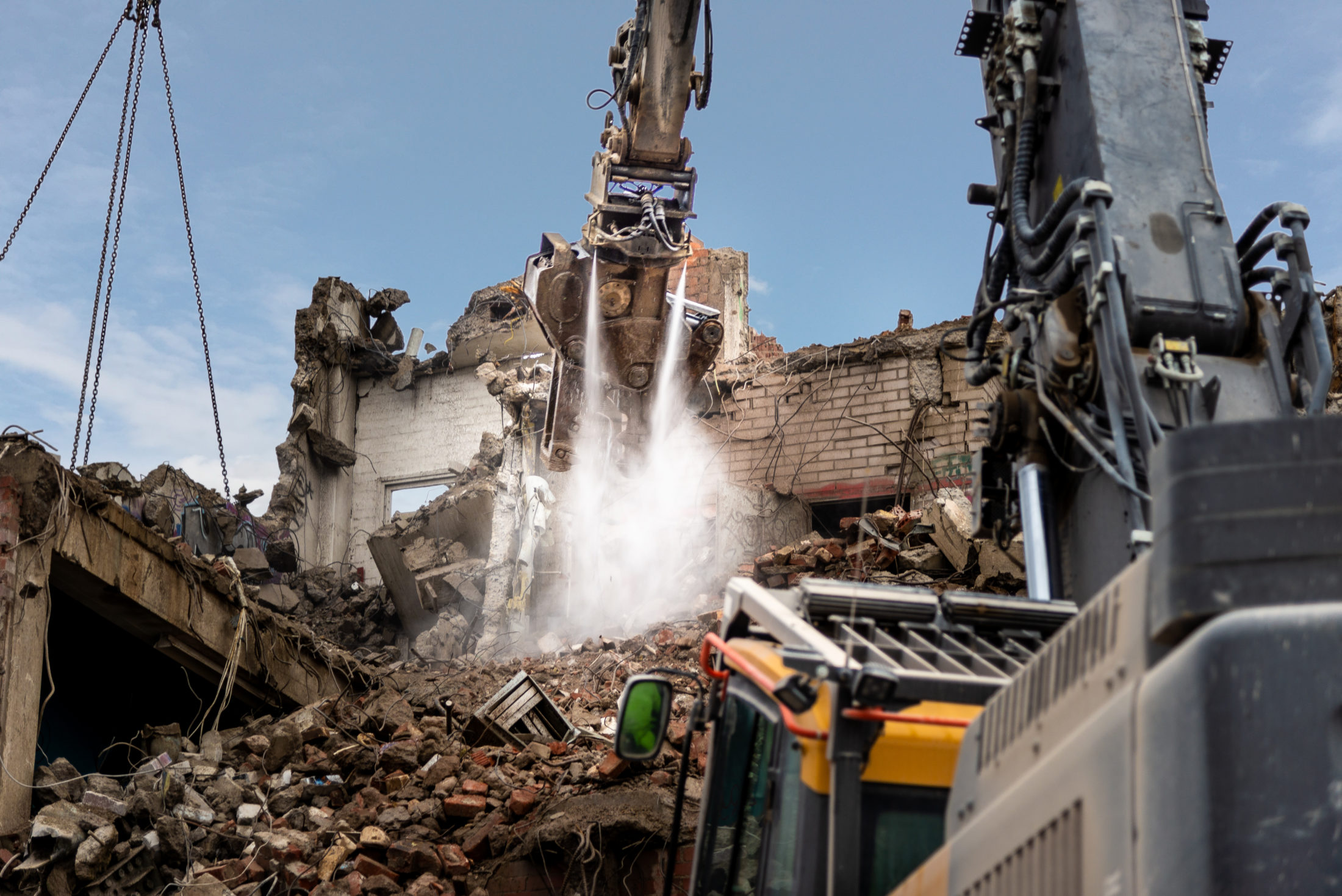Dust suppression cannons are widely used on demolition sites even though on many sites most of the dust emissions are born precisely from the use of demolition tools. But now it is time to forget the rainy days. In this article, we highlight five things that underline the superiority of the DYNASET HPW DUST High Pressure Dust Suppression System compared to traditional dust cannons.
1. Very precise dust binding
HPW DUST’s nozzles are installed either at the end of the excavator’s boom or directly on the demolition tool. That way, the atomized water mist is always targeted exactly where the dust is emitted, and the particles are trapped under a cover right after birth. In the case of dust suppression cannons, the dust is already spreading through the air. On top of that, you have to readjust the cannon’s aim towards the right place every now and then.
Also, wind can carry the mist, which is thrown by the cannon, to somewhere else even if its aim is good. Wind also carries the dust off from the site. Because of the shorter range and high-pressure of the water mist of HPW DUST, the wind isn’t a problem to it.
2. Precise and efficient water usage, less mud
The mist that is created by HPW DUST High Pressure Dust Suppression System is much more precise than the dust cannon’s mist throw. It means the worksite will not turn into a muddy field with an HPW DUST.

3. Suppress the dust instead of blowing it away
Dust cannons have a powerful fan equipped with water nozzles that creates the dust binding mist throw. At the same time, the same fan makes a powerful airflow that carries some of the dust particles away without binding them. And this is not good especially on worksites that are located in cities. Precise HPW DUST binds the dust around the tool so the particles won’t have neither the space nor the opportunity to spread around.

4. No extra obstacles to a worksite
Demolition sites are often crowded with machines, trucks, piles of debris, containers, and such. With HPW DUST, you neither need extra space for the dust cannon nor an electrical cord going across the site to power up the cannon.
5. No need to drag it around or use the time to deploy
Drag the cannon to the worksite. Place it in a good position. Connect hoses and power cord. Aim the throw of the cannon. Turn it on. Work for a while. Aim again.
Isn’t this time-consuming and frustrating? Working is much simpler with onboard HPW-DUST. Drive the machine to the side of the building, connect the inlet water hose or fill up the water tank, activate the dust suppression system from the cabin when needed, and concentrate on real work.
